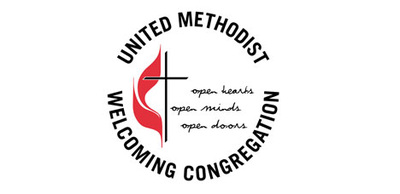|
By Pastor Tracey Leslie Scripture: 1 Corinthians 1:18-31 In America, there are a variety of cultural norms and expectations of which we may not even be consciously aware. But there are also regional norms and values around which we may be more perceptive. As I’ve mentioned, I grew up in south central Pennsylvania, the small, Appalachian city of Johnstown. One of the values in my culture of origin was to live one’s entire life close to home. My dad’s ministry took my family out of the Johnstown area for a total of eight years… and they were eight of the longest, most difficult years of my mother’s life. Johnstown was where our family belonged. When my sister’s husband was laid off early in their marriage by two consecutive companies who went out of business – not at all an uncommon thing in Johnstown’s depressed economy – it did not cross their minds to move to a different geographical area with better employment opportunities. Johnstown was home. When I left south central Pennsylvania, I felt that I had betrayed the values of my upbringing. No one told me I had done wrong but I had internalized this important cultural value that I subsequently transgressed. To this day, when a distant relative passes away and I am unable to return for the funeral for whatever reason, I hear a faint voice in my head that says, “If you weren’t hundreds of miles away, you could be there.” It is hard to release our cultural norms and values. Perhaps you have had a similar experience. If you have ever lived in a different geographical culture for an extended period of time, you may have experienced the discomfort of cultural dissonance If you look at your program, below the sermon, you’ll see pictures of various crosses. Today crosses are more than an indicator of religious identity. They have also become art. This morning I’m wearing a cross that was a gift from the choir I directed decades ago at Church of the Cross United Methodist in Dayton, Ohio. It is decorated with musical and religious symbols. It is a lovely work of art. Yet, for a first century Christian, such an artistic rendering of a cross would have seemed completely crazy. In the time of Christ, few images were more offensive than that of a cross. Crucifixion was a form of capital punishment reserved for the very worst of criminals. It might be akin to wearing a syringe around your neck today. In our culture, the worst criminals are put to death, primarily, by lethal injection. In addition, thousands of Americans each year die by syringe as a result of drug overdoses. Others do not die but, heroin and other injectible drugs have devastated their health, their relationships, and their lives. Even those of us who rarely experience syringes still associate them with unpleasant experiences like flu shots. There is nothing attractive or alluring about a syringe. And there was nothing attractive or alluring about a cross in the first century Mediterranean world. It was an instrument of shame and suffering. Those put to death on a tree were considered cursed by God.[i] And yet God chose this instrument of death and pain, shame and humiliation to be God’s instrument of salvation… a hard reality for 1st century Mediterranean people to accept.
In this current sermon series for the season of Epiphany, we are focused on the themes of discipleship and revelation or seeing. We experience physical sight because light enters the eye through the cornea, creating an image on the retina. But Jesus, the Light of the World, offers an inverted image. Jesus, God in human flesh, came to reveal God’s desires and kingdom values. And they are the values that, even today, ought to govern every Christian Church. Jesus lived a life of sacrifice, service, compassion and humility. Those are the core Christian cultural values: sacrifice, service, humility, compassion. As John’s gospel tells us, Jesus’ crucifixion was not a source of shame and his life was not taken from him by enemies who overpowered him. Rather, it was Jesus’ choice to lay down his life[ii] even in a way as shameful and excruciating as crucifixion, death on a cross. His willingness to embrace humiliation led to his glorification.[iii] So it was a hard sale when the Apostle Paul preached his message of the cross, especially in the city of Corinth. What Paul proclaimed did not mesh with his audience’s cultural norms and values. In a culture where image was everything, Paul (like Jesus) presented an inverted image; one in which the weak are actually strong and the poor are actually rich. The disciples (or students) of Jesus are called to learn and live according to their teacher’s instruction, not just as individuals but together in community; a community governed by the gospel. Jesus’ disciples are called to see the world differently; called to cultivate communities constructed on these inverted images that don’t adhere to the worldly values of wealth, power, and popularity, but to the kingdom values of humility, sacrifice, compassion and servanthood. The Christians of ancient Corinth placed great value on image and reputation. They knew what was valued in their cultural context. By the time Paul had begun his missionary work there, Corinth was well on its way to becoming the largest and most populous city of Greece.[iv] Think of the lyrics to the Frank Sinatra hit, “New York,” and you can get a picture of ancient Corinth’s appeal. As Julius Caesar had the city reconstructed, influential citizens would fund construction projects. In exchange, their names would be inscribed on the columns of the buildings, along with notes about their status and their membership in local civic organizations or clubs. Bible scholar Ben Witherington writes that “Corinth was a city where public boasting and self-promotion had become an art form.”[v] In the ancient world, the way in which one maintained their honorable social status was through patronage or benefaction. And, in a time when there were no church buildings, wealthy members of the Corinthian congregation would have been the only ones with homes large enough to host church gatherings. So the less fortunate were beholden to them even to exercise their faith. In ancient Corinth, in order to have a gathering space for instruction in Christian discipleship, one must place oneself at the mercy of the rich and powerful.[vi] Once again, in the ancient world, one maintained their social position and reinforced their social status through patronage or benefaction. So, you can see the conundrum here. The gospel, with the cross at its center, called for a lifestyle in which people “did good” for others not to gain notoriety or influence but in order to emulate the humility and servanthood of Christ. Yet, they found themselves living within a wider cultural context that was in direct opposition to this theology. Christianity inverted the prevailing cultural image; it turned those Corinthian values upside down. Needless to say, Paul had his work cut out for him. But it is really not so different today. Over the years I have heard from others and seen with my own eyes how Christian “churches” sometimes fawn over those with wealth or influence. Churches covet young families and youth so they can boast to denominational officials about their statistics. Some congregations still build new churches with tall spires or steeples… that serve no practical purpose. Others seem in a contest to have the biggest video screen and the most popular praise band. Their images of success seem not much different from any other business or civic organization: big, powerful, and glitzy. And friends, that is why I am so thankful to be here at Trinity. I have experienced Trinity as a place where we value all of God’s people, not just those with lots of money or community influence or high-profile talents. We value everyone and believe that everyone has a gift to offer and a blessing to bestow. We are all called to give – but we give in different ways according to the gifts God’s Spirit has given us and, according to the apostle Paul, no gift – save the ability to love – should ever be judged more or less important than the others. In fact, Paul was careful to stress that those who struggle most should also be cared for with the most respect. Those who are struggling shouldn’t be looked down on for their struggles. We are to be sensitive and respecting of their areas of struggle and support them and help them grow. After all, we all struggle at some point along the way. Brothers and sisters, one of the clearest demonstrations of our individual growth in Christian discipleship can be seen in the way we treat one another. In my 26 years in pastoral ministry, I confess, I’ve pastored a couple churches where I thought to myself, “I wouldn’t be here if you weren’t paying me and, frankly, you couldn’t pay me enough to really want to be here.” Yet I’ve pastored other congregations, like this one, where – if I weren’t the pastor assigned to a congregation – this is the church I’d choose to attend because this is a church where people are loved and welcomed; accepted as they are, yet encouraged to grow. The New Testament is filled with teaching about how to follow Jesus, how to be a disciple. But at the end of the day, it doesn’t matter how well we know it; what’s matters is how intentionally and faithfully we are living it. Christian communities don’t live according to the world’s cultural norms and values. We see the world and one another differently. Our image of success is not one of power, wealth or popularity. Ours is an inverted image; one that reflects Jesus’ values of compassion, sacrifice, humility and servanthood. I have another cross with me this morning. A friend crafted it from the woodwork of the abandoned City Methodist Church in Gary. That church, once enormous and successful fell into physical and spiritual decay when its members fled the city to escape integration. So this cross was crafted from a place of destruction, death and decay… the inevitable result when we live according to the world’s values and norms. For many at City Methodist, the message of the cross was a stumbling block and foolishness just as it was for some ancient people of Corinth and other Greco-Roman cities. But here in this place, here at Trinity, we see things differently. This morning I want to encourage you to continue to do what you have been doing and to do more of it; to treat one another with honor and respect regardless of where we fit in the world’s pecking order; to encourage and build up those who are struggling. Friends: this is what I – and more importantly Jesus and Paul – urge you to do even as I pray that God will continue to inspire us to cultivate a Christian community that embraces and values all God’s people regardless of age, race, income, gender, ethnicity, or ability for that is the message of the cross and that is the clear, 20/20 vision of Christian disciples in community. [i] See Deuteronomy 21:22-23 and Galatians 3:13 [ii] See John 10:15-18 [iii] See John 12:23-28 [iv] See Conflict and Community in Corinth: a Socio-Rhetorical Commentary on 1 and 2 Corinthians by Ben Witherington III; Eerdmans Publishing; 1995; p. 5. [v] Ibid., p. 8 [vi] In addition to Witherington, for more about this Corinthian phenomenon, see The Social Setting of Pauline Christianity: Essays on Corinth by Gerd Theissen; published by Fortress Press; 1982.
1 Comment
Tammy Poore
2/10/2020 07:51:50 pm
I just love the way Trinity has embraced me. I was only able to attend a precious few services, which I still hold near and dear to my heart, before I was placed in a nursing home. Trinity still lets me use my gift of crocheting to bless others through the prayer shawl ministry. Kay even brought a pattern and all of the supplies needed for a shawl to the hospital before I was transferred to Signature Healthcare, my new home. I am truly touched that Trinity is not only allowing me, but also enabling me to continue to minister to others when I am among the least of them!
Reply
Leave a Reply. |
Sermon videos are currently available on our homepage.
Pastor Tracey
On a lifelong journey of seeking to live out God's call on my life and to reflect His grace. 10 Minute SermonsCategories
All
Sermon Archives
September 2022
|
Trinity United Methodist Church
Growing in love and service through relationships with God and community
|
Connect with Us:
|
|

 RSS Feed
RSS Feed





